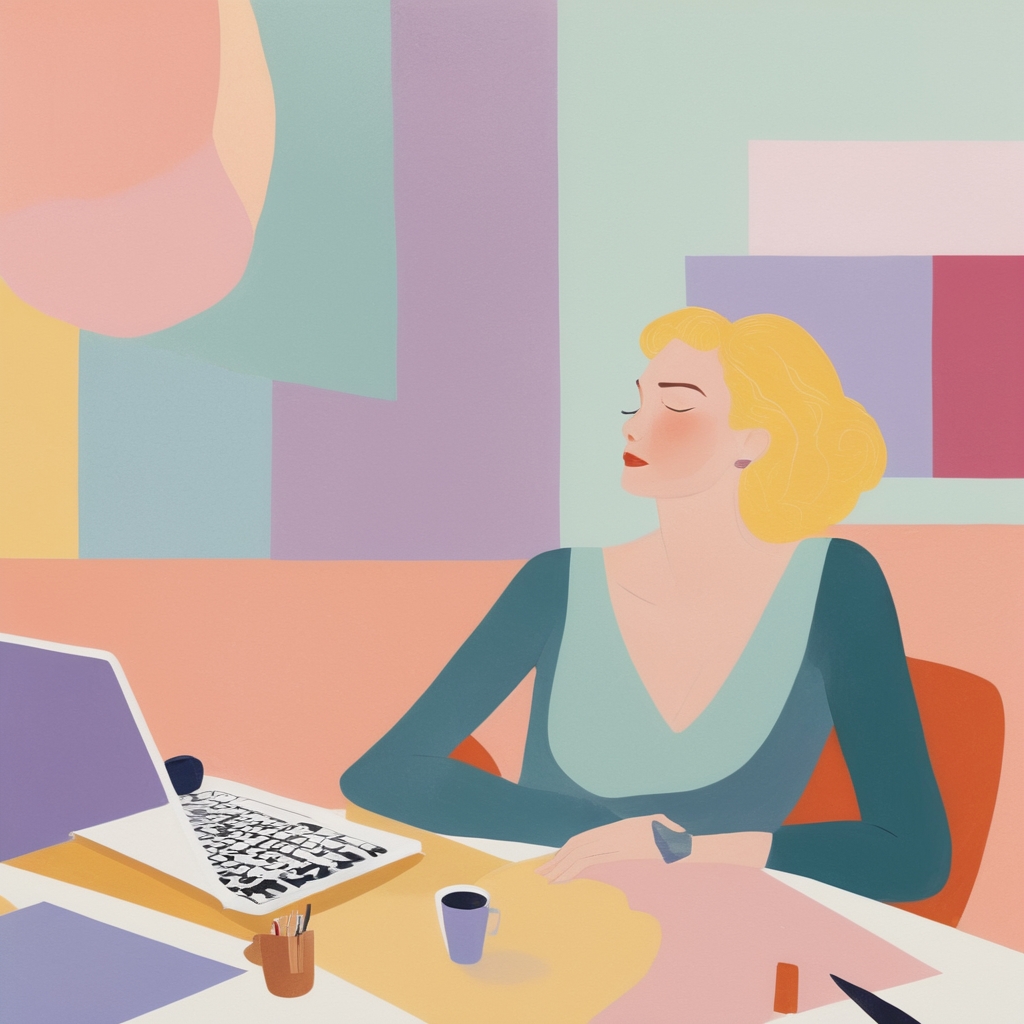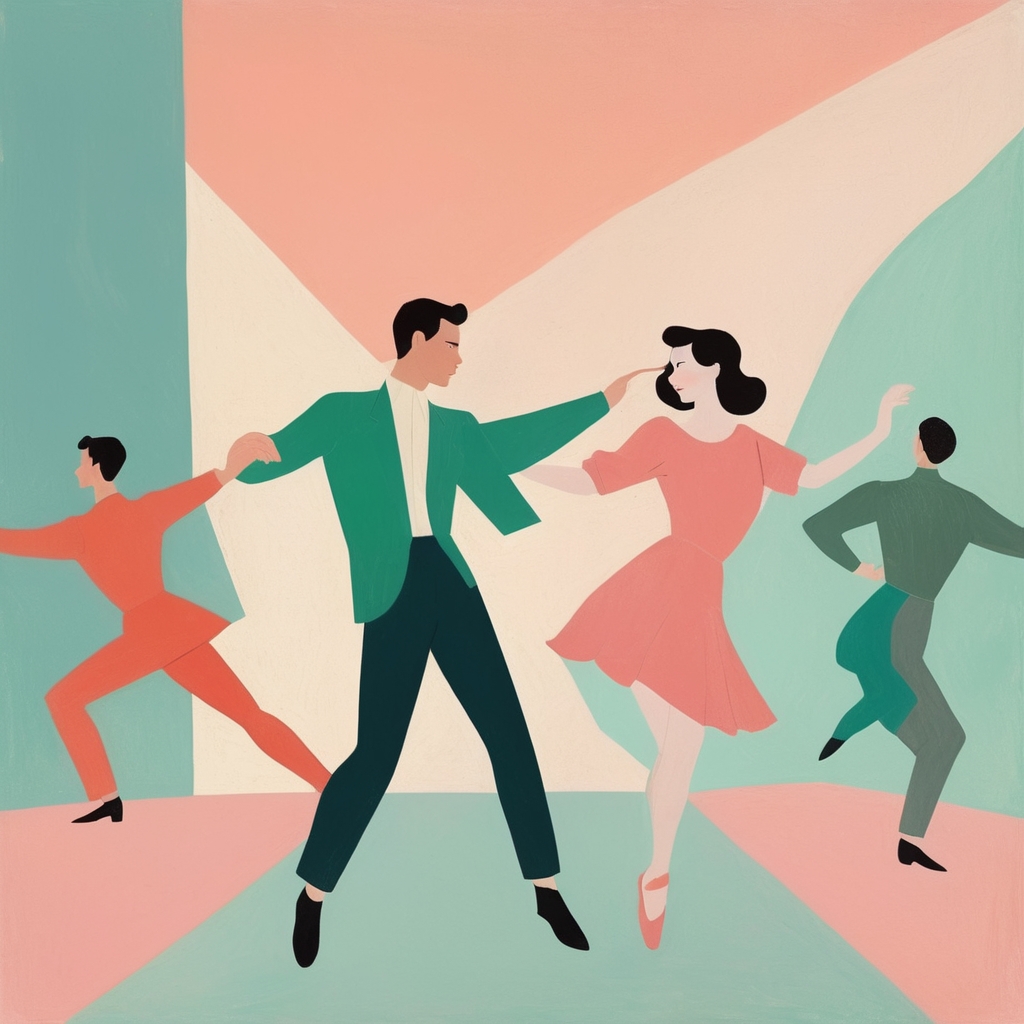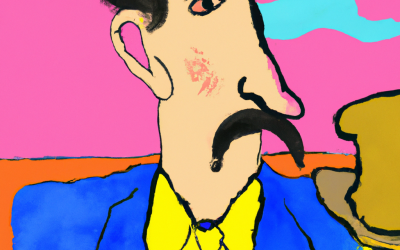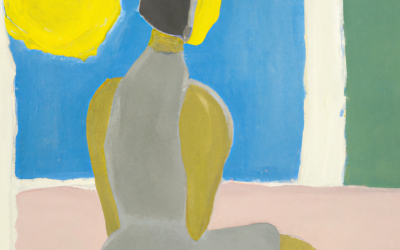Emotions Are Complex and Difficult Things
Using our own creative practice, we can release or dissolve any emotion. In this post we will delve into the Hows and Whys of how to dissolve negative emotions with a creative practice, and how this can benefit us as artists and as human beings.
But first I want to mention that this is a complex subject and one that can be viewed in a lot of different ways. My background on the subject comes from a mostly Buddhist, spiritual perspective, but I also relate to a sort of practical, artist-minded approach to it. The ability to transform or dissolve negative emotions using a creative practice is, I believe, something every artist or creative-minded person can do. And it is an incredibly handy skill – beneficial to us in ways that are far reaching, and also somewhat hard to put into words.
Some artists say that that their emotions are not a problem for them, and that their artistic process takes care of the emotions for them – that without intending it, their creativity resolves their negative emotional patterns automatically. Really??? If this is you, then good for you, you are the .0001% of humanity (but I don’t really believe you, heheh).
To be completely honest, I’ve never met anyone, especially any creative-minded people, who don’t have difficulties with their emotions at some point or another. It seems inherent to human life on planet earth, but that is of course my opinion, and maybe your experience has been different. Anyway, I will do my best to elucidate my personal experiences with this subject as an artist and creativity teacher.
Emotions are Elusive and Changing
Emotions are things in our life that often do not cooperate with our wishes. They are stubborn and elusive. They can change in an instant and often do. Emotions can give us a lift, or completely derail us from what we’ve set out to accomplish on any given day.
On a deeper level, difficult, fear-based emotions can fill our subconscious mind with negativity, giving way to depression or sudden bouts of anxiety. They can appear as trauma, hiding deep within the psyche for years, even decades, lending an almost unbearable weight to our everyday experiences, and forcing a wrench into our lifelong dreams.
That said, emotions are indeed important teachers for us, and they can be very useful for us. So it’s important to have a basic understanding of them. And by understanding, I mean a practical, conceptual way to approach them that is helpful in exploring our human experience – not some kind of inert, standard textbook definition.

Emotions are Physical Memories
So to be definitive, emotions are, in a nutshell, thought-driven phenomena created within the body, human or animal. They are, generally speaking, thoughts stored in the body as physical sensations – physical memories, if you will. These physical memories can come from our previous experiences in this life, or in ‘past lives,’ as they say. They are often not accessible to us because they are stored within the unconscious part of the body-mind “fight or flight” survival mechanism.
As such, emotions can be very useful to us, especially if we are in danger, physical or otherwise. As they are inherently based on some kind of resistance to something unwanted, they are like programs that alarm us and direct us to safety in certain potentially harmful situations.
As well, our emotions are useful for us because they are the connection between the conscious and sub-conscious minds. They are reminders, or barometers, of what is going on beneath the surface of our minds. As such, we can use them to access hidden thought patterns and beliefs, and thus to resolve difficult problems in our lives.

Emotions are Powerful Creators
In terms of human creativity, the sub-conscious mind is known to many to be the mechanism which creates our ‘reality’ in this 3D/4D world we know as planet Earth, it is crucial to our ability to create what we desire. A simple example would be if you are thinking about someone close to you who is sick in some way. If you think about them being healthy again, and you feel positive, happy emotions while doing so, you can actually help to heal their sickness, depending on your ability to be present in the body while feeling the emotion and thinking the positive thought about them. (More on this topic in a future post, perhaps…)
However, in contrast, if you try to heal someone using negative or fear-based emotions – for instance, if you’re afraid of losing a person who is having the health problem and you feel that fear while thinking about them – your ability to heal them with your thoughts will be greatly diminished, and you may even do more harm than good.

Emotions Can Be Harmful
Furthermore, given that emotions are often not readily accessible to us or not within our control, they can and often do present difficulties to us in our lives, appearing to us when we are no longer in need of the “fight or flight” survival mechanism. Anger is one emotion which can present major difficulties for us, and can cause major damage to our state of being if not controlled. In fact, one really angry moment can destroy one’s entire life and the lives of others, causing severe karmic repercussions.
Why Dissolve Negative Emotions?
Now that we have a general, basic understanding of what emotions are, we can move on to the Hows and Whys of dissolving them (letting them be dissolved). I assume that most people want to be free of their difficult emotions instead of, for instance, suppressing them. This assumption is based on my experience with teaching this subject, but of course it is still an assumption.
Maybe you are not interested in dissolving your negative emotions, and of course I respect that. In this case, if you are a creative person, you may want to learn how to direct them. However, I do not recommend either letting them run amok, nor suppressing them, given what we now know about them. Either of these options seems to only lead down the road of suffering and despair.
For myself, it is simple. Emotions are sometimes very difficult, and if they’re not really serving us, and if we can investigate them and let go of them, and thus become more centered and at peace, why not do it? You might also think, well, maybe they’re there for a reason…so why should I try to get rid of them?
I would say this: emotions ARE there for a reason. That reason is, there is something in the discomfort of that sensation that wants your attention. Something in your life is out of alignment. It wants you to look at it, and resolve it. It is saying: ‘HEY! DID YOU NOT GET THE MEMO YET?! PAY ATTENTION!!’
Possibly it is there to instigate some kind of change in your life, so that you can learn and evolve into something higher, something new – or to change a habit or a belief that is holding you back from what you truly desire. Perhaps it is there for another reason that you don’t know about yet (but that you can discover using contemplation, or mindfulness).
Most Emotions Can Be Easily Resolved and Dissolved
Using mindfulness, one can accept, resolve, and ultimately dissolve negative emotions, whether they be conscious or unconscious. This can be done by connecting the mind to the body with a grounded, relaxed awareness. By connecting with the body mindfully, we have access to many emotions that are not readily available to the conscious mind. When you’re truly connected to the body with subtle awareness, suddenly all of these old emotions come bubbling up, and you can feel them as sensations in the body.
When you feel an emotion directly, without any kind of agenda – without wanting to do anything with it but feel it, let it be felt – it usually begins to dissolve on its own. It does so because there is no longer resistance – the initial fear that created the resistance is no longer there because the mind sees that the body is safe from harm or from something unwanted. The mind sees this directly and the emotion dissolves because it no longer has a reason to be there.
– Unless there is a reason for it to still be there. Sometimes an emotion will not completely dissolve on its own, and that’s ok. Sometimes it takes more time, or more life experiences, for an emotion to resolve itself and free itself from the body. This is to be expected. Because we know that some of our emotions may still have something to teach us, we just learn what we can learn, intend to accept the difficulty of them, and move on to the ones that we can do something about.
Based on my experience, once you have gone through this process with a conscious understanding of it, you will learn how it works. Then you can apply it to any emotion. And you can dissolve negative emotions in any situation, at any point in your day.
Releasing – Dissolve Negative Emotions Using a Creative Practice
The creative process is fertile ground to resolve and dissolve negative emotions. But why? Because creativity inherently involves an action with the body. Fundamentally, there is a connection between the body and the thinking mind during the creative process that is essential for releasing emotions. As well, creativity is fun. (Often more fun than sitting in contemplation, IMHO.) We tend to be more relaxed when we’re being creative because we’re having fun – we’re not in our heads, we’re just expressing ourselves. This makes dissolving emotions easier because it’s easier to let go when we’re more relaxed and enjoying life.
A Simple Exercise to Dissolve Negative Emotions
- Imagine a scenario where you are doing something creative, like playing the piano. You can tap into a state of mindfulness where you connect more fully with the body and sense the emotion or emotions that come up for you. Close your eyes and feel your whole body at once.
- Then, after a while, feel any emotion that presents itself in the body. When this happens, just let it be there, and feel it – what does it feel like? What shape is it? Where is it located in the body? Is is hot or cold? Is it rough or smooth? Is it still or moving? Go on with your investigation for 5 minutes.
- After this, having no agenda other than to let the emotion be seen, you can see (or politely ask) if it wants to release and dissolve through the body via your fingers on the piano. Most likely it will want to come out this way but you can see for yourself. If it does, just let it do its thing on the piano – let your fingers express the emotion that is being released.
Once you understand this process, try it with any creative medium of your choice, with writing, or dance, or painting, drawing, etc.
And this is how you can dissolve negative emotions using any creative practice. Keep in mind that it’s always best to use a creative medium that does not require much thinking or effort – for instance, if you’re not an adept viola player and you’re trying to do this on a viola, you may have problems because you’re efforting too much, trying to figure out the fingering part as you do it. Instead, use something that requires little to no skill or effort, like scribbling with crayons on paper.
One more thing – this might sound like a very complex process, but once you go through it a few times, it will become very simple and easy. And once you notice how effective it is at releasing or dissolving your negative emotions, you will most likely want to do it more often.
And that’s it. You can even use this process to help resolve difficult emotional patterns such as anxiety or depression.

Why Creative Practices Are Powerful Tools for Emotional Healing
So, what makes creativity such a potent ally in this process? It goes beyond simply feeling better—it reaches into the psychological depths of who we are. When you engage in art forms like painting, writing, or even sculpting, you’re not just passing the time; you’re giving yourself a safe space to unpack emotions that might otherwise stay locked up inside.
There’s something uniquely organic about it—almost like the act of creating becomes a mirror, reflecting what’s going on beneath the surface in a way that feels natural and meaningful. It’s as if the brushstrokes or the words on the page take on a life of their own, carrying those tangled feelings out of you and into the world where they can breathe.
This isn’t just a hunch, either—there’s a reason it works so well. Creative practices tap into parts of your mind that logic alone can’t always reach. They let you bypass the chatter of everyday thoughts and connect with something deeper, something raw. For artists, this can be a lifeline, turning chaotic emotions into something tangible, whether it’s a vibrant canvas or a poem that captures a fleeting mood. Psychologically, it’s like opening a valve—releasing pressure that’s been building up, sometimes without you even realizing it.
Studies in art therapy back this up, showing how creative expression can lower stress levels, ease anxiety, and even help process trauma by giving form to the formless. It’s a way to externalize what’s within, making it less daunting and more manageable, all while fostering a sense of control and purpose.

Using the Power of Dance to Dissolve Negative Emotions
Have you ever considered dancing as a way to release what’s weighing you down? Moving your body—whether it’s swaying to a favorite song or just letting yourself move freely without a plan—can work wonders for shaking off stress, anger, or sadness. It’s remarkable how instinctive it feels, as if your body knows exactly what to do, taking the lead while your mind steps back. Those heavy emotions start to slip away, leaving you feeling noticeably lighter, almost like you’ve shed an invisible burden.
There’s a beautiful simplicity to it, but also a profound depth. Dance isn’t just about physical movement; it’s a full-body experience that engages your emotions on a visceral level. When you’re stressed or upset, that tension often settles into your muscles—your shoulders tighten, your jaw clenches. But when you start to move, something shifts. It’s as if the rhythm or the motion unlocks those trapped feelings, letting them flow out through every step or sway.
Researchers like Dr. Bessel van der Kolk, who study trauma, point out how the body holds onto emotional experiences—dance can be a direct way to release that stored energy. Whether it’s a slow, deliberate stretch or an energetic spin, you’re not just moving; you’re giving your emotions permission to leave. And the best part? You don’t need to be a dancer to feel it—just a willingness to let your body guide you can transform how you carry those negative emotions.
Understanding the Science Behind Emotions and the Body
There’s solid science behind all this—it’s not just a feel-good idea. Experts like Dr. Bessel van der Kolk, a leading voice in trauma research, have demonstrated how emotions, particularly those tied to trauma, don’t just live in our heads; they get stored in our bodies. Think about it: when you’re stressed or scared, your body reacts—your heart races, your muscles tense. Those physical responses aren’t random; they’re your body holding onto those experiences, sometimes long after the moment has passed.
Van der Kolk’s work, like his book The Body Keeps the Score, shows how these trapped emotions can linger in our nervous system, influencing everything from our posture to our stress levels.
Creative activities, such as art therapy, step in as a powerful way to mobilize those stuck feelings. And the reverse is also true—when you release stuck emotions, it will amplify the benefits creativity. When you paint, draw, or even strum a guitar, you’re not just making something pretty—you’re giving your body a chance to process what’s been locked away. Studies have found that these practices can lower cortisol, the stress hormone, which calms your whole system down. It’s like hitting a reset button, helping you shift from tension to a state of ease.
What’s so fascinating is how interconnected it all is—your mind, your body, your emotions—they’re in constant conversation. Neuroscience backs this up, too, showing how creative expression activates parts of the brain that regulate emotions, like the amygdala, while also boosting feel-good chemicals like dopamine. It’s a beautiful dance of biology and creativity, proving that what we feel and how we move or create are deeply linked.
How to Create our Own Emotional Release Routine
Interested in turning this into a regular part of your life? It’s easier than you might think—just start with small, manageable steps. Picture setting aside five minutes each day to doodle on a scrap of paper or jot down whatever thoughts are swirling in your mind. It doesn’t have to be a masterpiece; it’s about giving yourself a moment to let things out.
Then, weave in a bit of mindfulness—maybe focus on your breath for a minute or two, noticing how it feels as it moves in and out. That simple act can ground you, making it easier to connect with what’s going on inside. Over time, you can shape this into a personal emotional release routine, something uniquely yours that keeps those emotional burdens from piling up.
The beauty of it is how flexible it can be. You might find that one day, scribbling with a pencil feels right, while another day, you’re drawn to tapping out a rhythm on a table or humming a tune. The key is consistency—building a habit that becomes a steady anchor. You could even add layers as you go, like pairing your creative moment with a calming ritual—maybe lighting a candle or sipping tea—to signal to your mind that it’s time to unwind.
Think of it as crafting a little sanctuary in your day, a tailored way to check in with yourself. Psychologists often talk about how routines like this can help regulate emotions over the long haul, giving you a sense of agency over those heavy feelings. It’s not about forcing anything; it’s about creating a gentle rhythm that supports your emotional well-being.

Mindfulness Techniques to Enhance our Emotional Healing Practice
Combining mindfulness with creativity can truly elevate the entire experience, turning it into something richer and more restorative. Imagine this: you’re sitting down to draw, and instead of just letting your pencil wander, you focus on breathing steadily—deep, even breaths that anchor you in the moment.
Or perhaps you’re moving to music, letting your mind drift freely as your body sways, not forcing any thoughts but simply noticing them come and go. It’s a potent blend for holistic emotional healing, one that soothes both your mind and body in a way that feels effortless yet profound.
This isn’t just about relaxation—it’s a deliberate way to deepen your emotional healing techniques. Mindfulness, at its core, is about paying attention without judgment, and when you pair that with a creative act, you’re giving yourself a double dose of clarity.
You might try a simple exercise: take a deep breath, hold it for a count of four, then exhale slowly as you sketch a line, letting any negative emotion like frustration or sadness flow out with the air. It’s almost like a cleansing breath, washing away tension. Or picture yourself moving through a dance, recognizing where anger or resentment sits in your shoulders, then letting it disappear as you stretch.
These mindfulness techniques amplify your practice, helping you cope with emotions by connecting you to the present, fostering mental health and a sense of calm that lingers long after you’ve set down your tools.
Wrapping It Up
That’s the overview—everything you need to know about using this creative approach to tackle a whole spectrum of feelings, from those everyday frustrations that nag at you to deeper challenges like anxiety or depression.
It’s really about partnering your art with your body to release what’s holding you back, whether it’s a fleeting bout of jealousy or a heavier load of sadness that’s been sitting with you for a while. This isn’t some quick fix; it’s a way to process our emotions and help ourselves grow, tapping into body-based emotional release that feels natural and empowering.
Think of it as a personal invitation to experiment. You don’t need to be an expert—just start where you are. Maybe you’ll scribble out some negative feelings on a napkin, or let your fingers dance across a keyboard to let go of a lingering worry. The beauty is in its simplicity—you’re not trying to escape these emotions but acknowledging them, letting them affect you less as you replace tension with creativity.
It’s a pathway to well-being, a chance to help you learn strategies that work for you, whether you’re facing anger that flares up unexpectedly or a quiet resentment that’s been simmering. Give it a try and see where it takes you—there’s no pressure, just an open door to explore how this can lighten your load and bring a bit more peace into your days.
If you would like more explanation on how to dissolve negative emotions, you can get the book, The Infinite Artist. There are exercises in there with ample detail to direct you through it step by step.




















